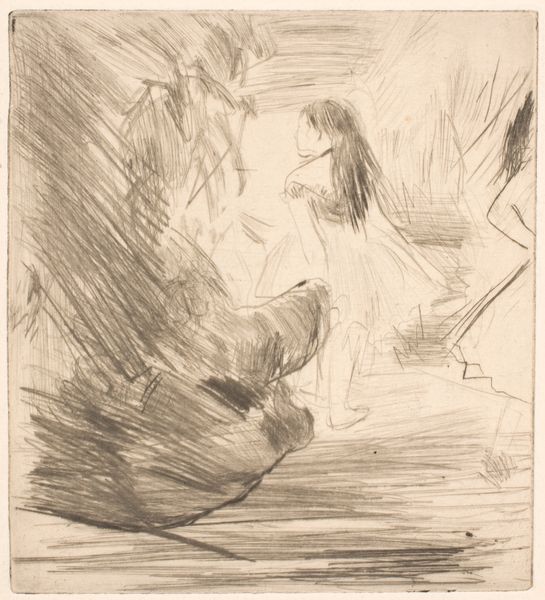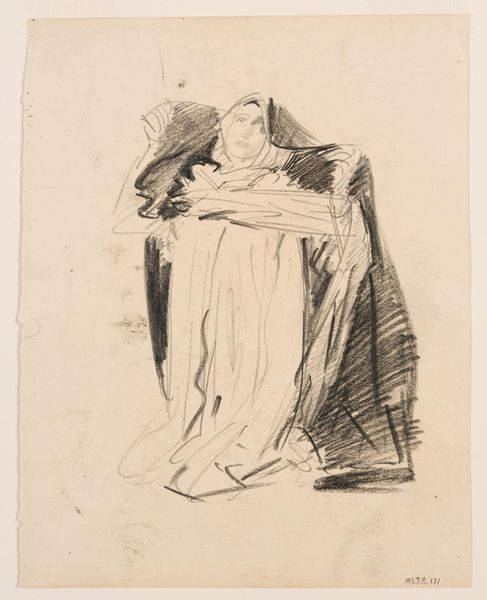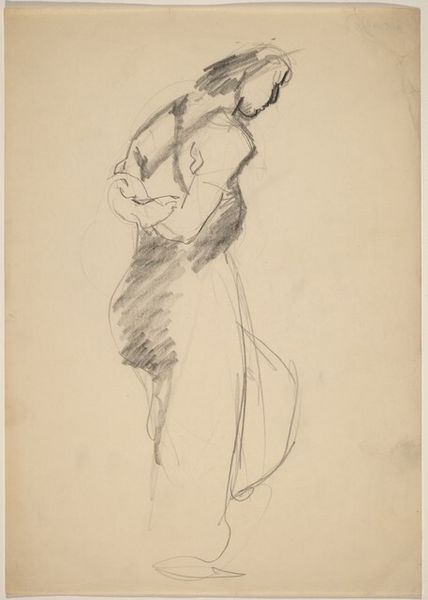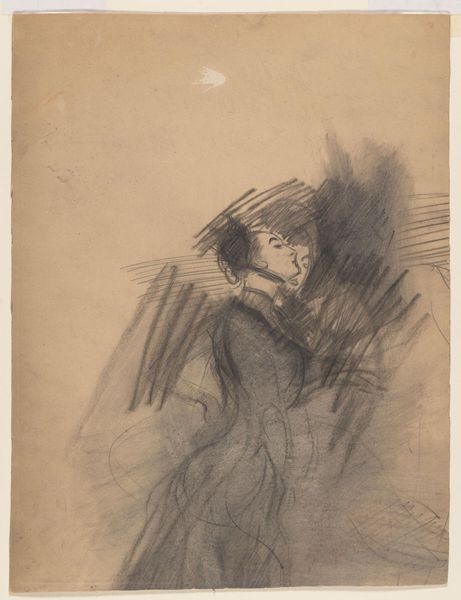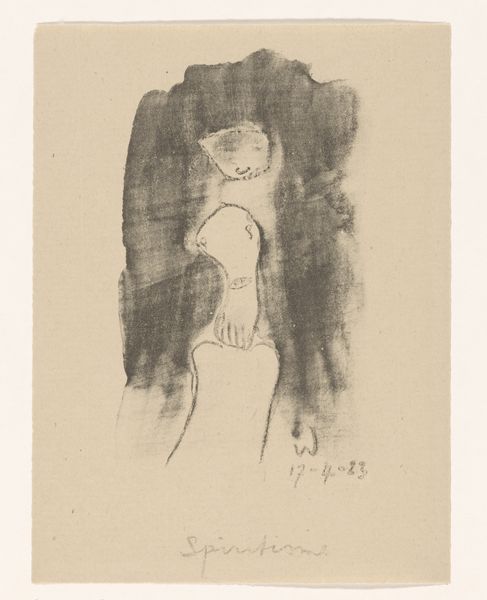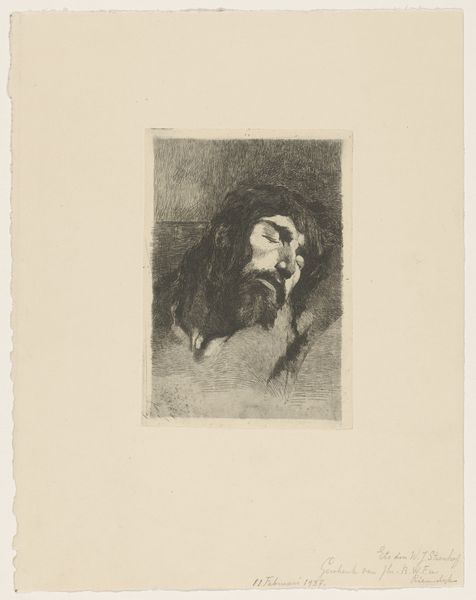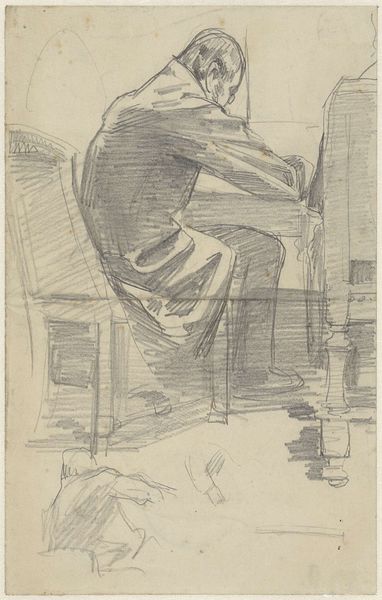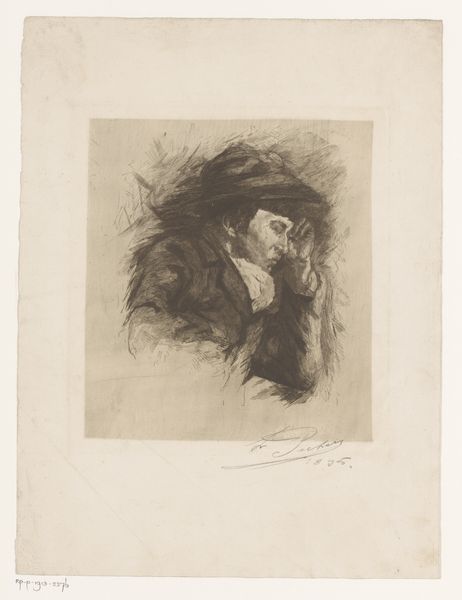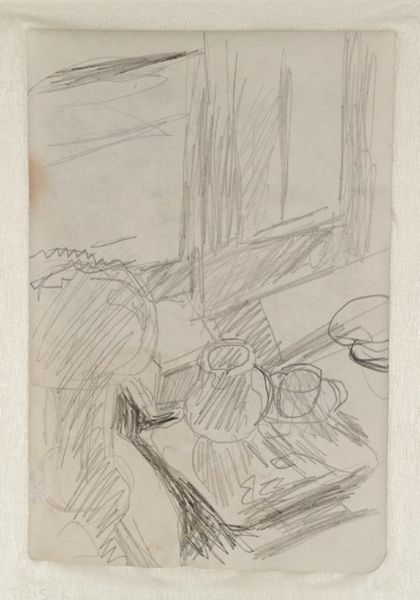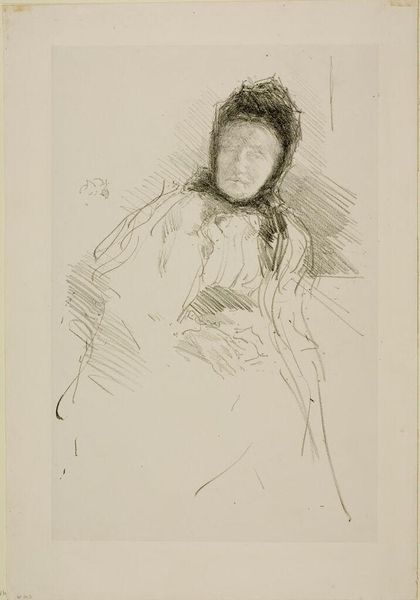
The Old Flemish Woman (La Vieille Flamande) 1833 - 1898
0:00
0:00
drawing, print, etching
#
portrait
#
drawing
# print
#
etching
#
figuration
#
academic-art
Dimensions: sheet: 4 7/8 x 4 3/4 in. (12.4 x 12.1 cm)
Copyright: Public Domain
Editor: Here we have Félicien Rops' etching "The Old Flemish Woman," made sometime between 1833 and 1898. There's something quite haunting about her gaze. I wonder, how do you interpret the symbolism in this seemingly simple portrait? Curator: The woman's aged face, etched with delicate lines, isn’t merely a physical representation, but an icon of cultural memory. Look closely at the hat. What stories does its presence evoke for you? Editor: I hadn’t considered the hat specifically. It seems almost theatrical, perhaps signifying a certain status or occasion? Curator: Precisely! It speaks volumes. Think about the societal role of elderly women in 19th-century Flemish culture. They were often repositories of tradition and lore. Rops may be hinting at this, using the hat as a visual shorthand for inherited cultural identity. Editor: So, the etching isn't just about capturing a likeness, but also about conveying layers of meaning? Curator: Absolutely. Consider how Rops uses line and shadow. The woman almost blends into the background, partially fading. This could symbolize a diminishing societal respect or the erosion of cultural traditions over time. Does the use of shadow remind you of any specific historical art? Editor: I see what you mean. The shadows are quite stark. I'm not sure which style this reminds me of, but it is powerful! Curator: Powerful indeed. Rops masterfully layers meaning, turning what could be a simple portrait into a profound reflection on aging, memory, and cultural change. Editor: It's incredible how a single image can hold so much! Thanks for illuminating those layers of meaning for me!
Comments
No comments
Be the first to comment and join the conversation on the ultimate creative platform.
